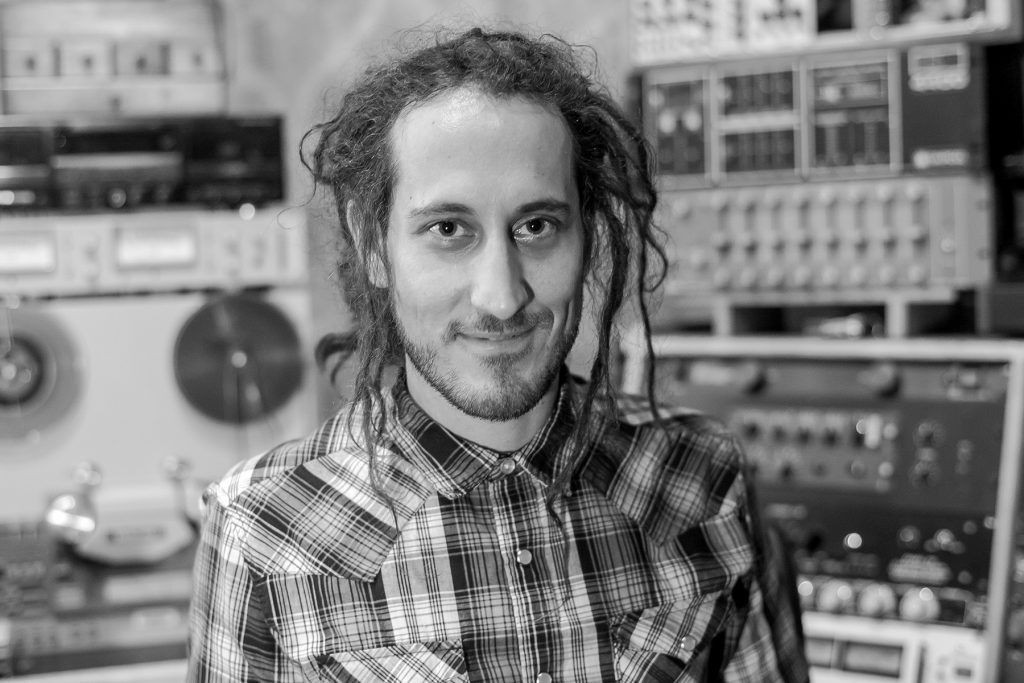Having emigrated from the Soviet Union to the United States at age 9, Regina Spektor took her classical piano training and then began to write original songs. After self-releasing her first three records, the Grammy® Award-winning singer-songwriter signed with the Sire/Warner Bros. Records label and has since released four albums. On September 30th she released her fifth effort titled Remember Us To Life. With Spektor being very detail-oriented, it was important to capture every nuance of her performances—and this is precisely why microphones from Burbank, CA- headquartered Mojave Audio and Royer Labs were utilized.
LA-based engineer and producer Samur Khouja engineered Spektor’s latest endeavor. As the owner of Seahorse Sound Studios in downtown Los Angeles, Khouja is well known for his sound design and synthesis capabilities. In addition to Regina Spektor, he has worked with Devendra Banhart, Cate Le Bon, and Joanna Newsom. Spektor’s Remember Us To Life was recorded in a few locations, including Khouja’s Seahorse Sound Studios and LA’s Village Studios. He shared some perspective on the Regina Spektor project and his use of Mojave and Royer microphones.
“Regina is fantastic to work with,” Khouja reports. “She is really cheerful and gets so excited when she hears new sounds—and she seriously shreds on piano. On Remember Us To Life, she was very enthusiastic about trying new ideas and was also very focused on having things technically correct at all times. We recorded most of the songs with her singing and playing simultaneously. Because of this, the Mojave MA-300’s continuously variable polar pattern selector was a huge benefit for finding the sweet spot with the least amount of bleed in this type of situation.”
Khouja elaborated on his use of the MA-300. “Using the MA300s on background vocals also worked out really well, as the ability to go in between Omni and Cardioid polar patterns enabled me to instantly add more or less room sound.”
Further, the MA-300s were used on grand piano, cello, and viola as well as room mics for the drums. Additional performances on the grand piano were captured using the Royer R-122 ribbon and SF-24 stereo ribbon microphone. When recording the upright piano, Khouja deployed Mojave’s MA-100 condenser mics. “We loved their off-axis response,” he explained, “which really flattered the pianos we were using. For the faster, more technical songs, the fast transient response of these small diaphragm mics really helped a lot.”
“We also used Mojave Audio’s MA-201fet mics for both kick drum and recording bass,” Khouja added. “These mics have a very nice low end that works really well when mixing.”
When recording an album project, it’s not uncommon to have questions about the gear at some point. In this regard, Khouja rates the customer and technical support services at Mojave Audio and Royer Labs very highly. “Mojave and Royer have the best teams,” he says. “They’re like one big family and they provide great support and always add some valuable perspective. I’m always excited to see what new products they release.”
As he shifted his focus to the business of the day ahead, Khouja offered some parting thoughts about his experience with Mojave Audio and Royer Labs. “I have been using Mojave mics for almost ten years now. Design engineer David Royer is truly a special and incredibly talented person and Mojave’s Dusty Wakeman and the rest of the crew really make things honest and easy. The best part for me is knowing I can trust these microphones—especially when I’m recording in new environments. That inspires a lot of confidence and goes a long way for me personally.”
To learn more about Seahorse Sound Studios and Samur Khouja, visit the studio’s website at www.seahorsesoundstudios.com.
